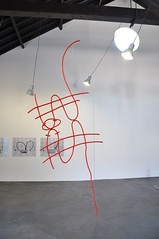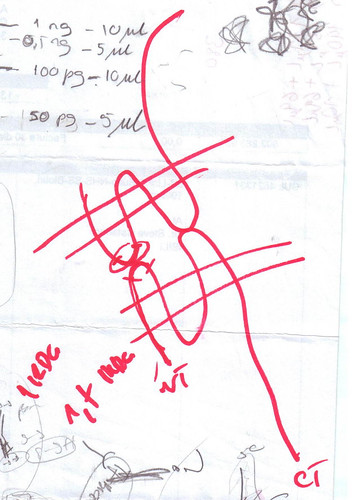In the last ten years or so, in the wake of the renewed interest in protein research and proteomics after genomics, we have seen more and more artists making protein sculptures. See, for example, Graphic Thought Facility’s neon protein artwork, or Colin Rennies glass sculpture of ATP synthase, or Julian Voss-Andreae’s wood and steel sculpures of proteins, just to mention a few.
Here’s another recent example. Herwig Turk sent me these images from his current exhibition gaps (with Paulo Pereira and Johannes Hoffmann) at the Museu da Ciência, Coimbra, Portugal (the museum of the Universidade de Coimbra):


Made by ropes and epoxy and coloured with red ship paint, gaps is based on a 3D-model of connexin43 drawn by PhD-student Steve Catarino at Universidade de Coimbra in connection with a research project supervised by Paulo Pereira.
Cx43 is one of the several specific proteins that form so called ‘gap-junctions’, i.e., channels that allow signal molecules to pass the membranes between cells. Intercellular communication by means of ‘gap-junctions’ is vitally important for many bodily functions; best known is the gap junction signalling responsible for the coordination of heart beat.
Herwig explains the background for the artwork: [Steve] did a sketch to explain it to the students and we build a sculpture after that sketch”:

Protein sculptures
In the last ten years or so, in the wake of the renewed interest in protein research and proteomics after genomics, we have seen more and more artists making protein sculptures. See, for example, Graphic Thought Facility’s neon protein artwork, or Colin Rennies glass sculpture of ATP synthase, or Julian Voss-Andreae’s wood and steel sculpures of proteins, just to mention a few. Here’s […]


